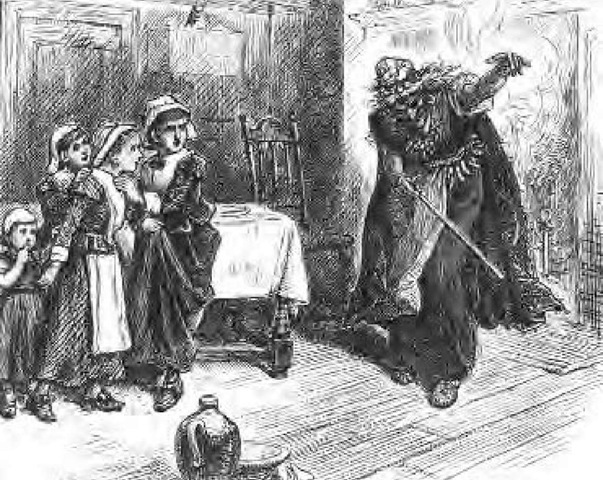Fear of witches and witchcraft reached epidemic proportions at the beginning of the early modern period in Europe. Though the fear of witches had existed in the later Middle Ages, the greater fear in medieval times had been of heresy. Although heresy remained a major problem for the Catholic Church, it was the fifteenth century rise of neo-Platonism with its acceptance of a magical world view that encouraged a belief in magic and evil powers. Undoubtedly, a major contributing factor was the disastrous effects of the Black Death that had swept Europe in the fourteenth century and continued to devastate Europe for several centuries. Inevitably the Inquisition, which originally had been established to deal with heresy, became active against magicians and diviners and against those associated with certain sexual activities.
Pope Innocent VIII (1484-1495) in his bull issued December 5, 1494, stated that it had been called to his attention that members of both sexes were using incantations, charms, and conjurations that allowed them “to suffocate, extinguish and cause to perish the births of women” and that “men beget not, nor women conceive” and they “impede the conjugal action of men and women”. The persons most responsible for the papal proclamation were Heinrich Institor (Kramer) and Jakob Sprenger, who were running into opposition for their witch-hunting activities. Using the bull as a justification, the two wrote a handbook for all witch-hunters, the Malleus Malleficarum, or “Hammer of the Witches,” published in 1486.
Though neither contraceptive practices nor abortion were specifically mentioned by Kramer and Sprenger, the papal bull clearly raised the question of abortion. Witchcraft soon came to be associated with impotence, infertility, abortion, and various means of preventing pregnancy. Women, in fact, were the primary objects of witchcraft persecutions because they were believed to be more susceptible to demonic possession than men.
Interestingly, George Hummel in his investigation of witchcraft held that one of the cures frequently offered to women who were believed to be possessed was emmenagogic medicines, medicines that not only encouraged the onset of menstruation but also brought about abortions. In fact, one measure of the success of the treatment was if a woman’s uterus dropped and her menses began. Whether those giving the exorcism treatment realized that they might be aborting a woman is highly debatable, but that is what might well have happened.
In the sixteenth and seventeenth centuries the whole process of pregnancy was often caught up with witchcraft. Though Margaret Murray, an early investigator of witchcraft, concluded that the better the midwife the better the witch, this is somewhat of an exaggeration but with a strong kernel of truth. Among the women accused of witchcraft in the Salem witch trials in New England were two midwives, Anne Hutchison and Jane Hawkins.
Women and girls who knew how to control their reproductive lives were often accused of witchcraft. Here, the slave woman Tituba taught a few “magic tricks” to several young girls in her care.
It seems contradictory that the witch-hunters were using abortifacients to remove the evil spirit, and yet midwives were accused of being witches for bringing about menstrual regulations. Certainly midwives were widely believed to know how to cause an abortion and which herbs might prevent conception. In those areas of Europe where midwives were licensed, midwives were often required to take an oath that they would not use any witchcraft or charms in their practices nor, in some cases, administer any drugs or potions that had not been prescribed by a Latin-reading surgeon or physician. The requirement of the surgeon or physician in this case, however, might indicate the results of a turf war because by the end of the seventeenth century male medical professionals were increasingly moving into the obstetrical business, particularly among the rich and powerful.
This struggle continued in the United States until well into the twentieth century and one of the charges that the medical profession used against midwives was that they were the abortionists in society, and the campaign to replace them was also a campaign against abortion.

